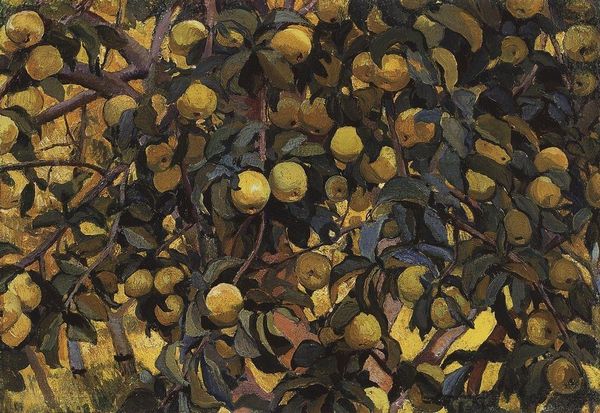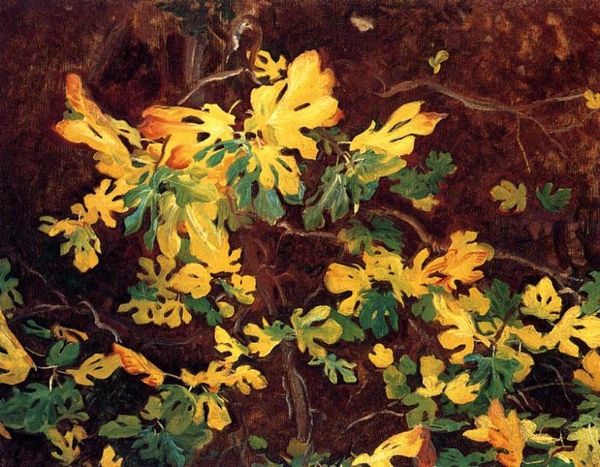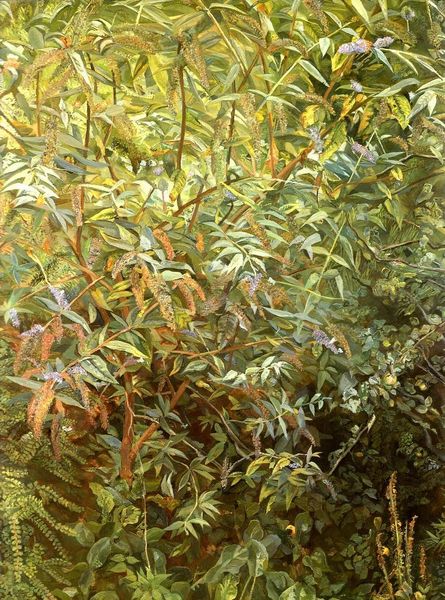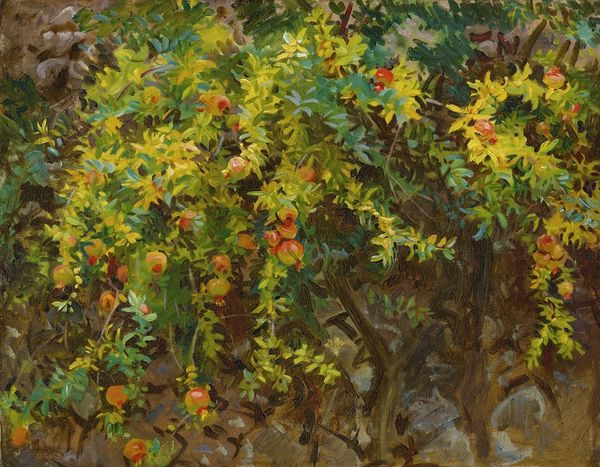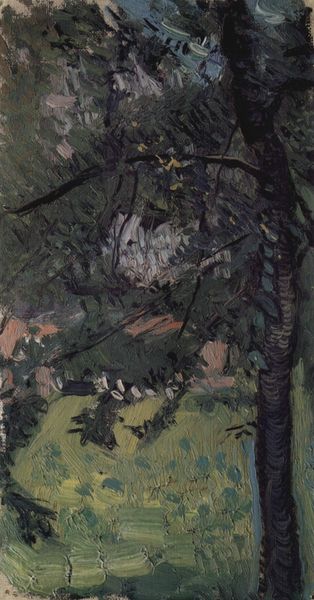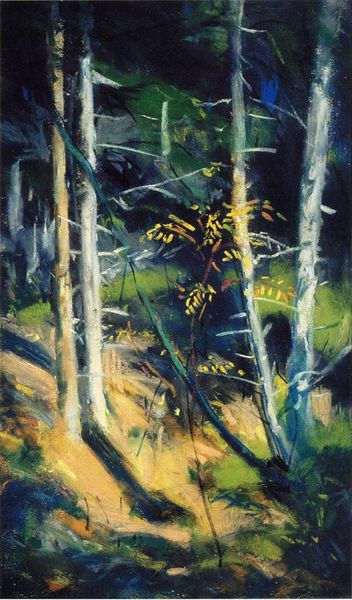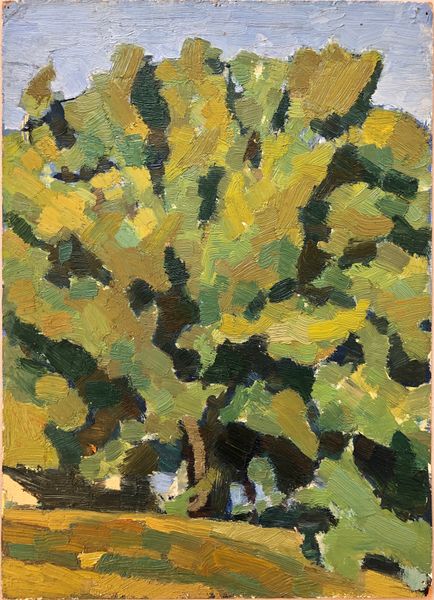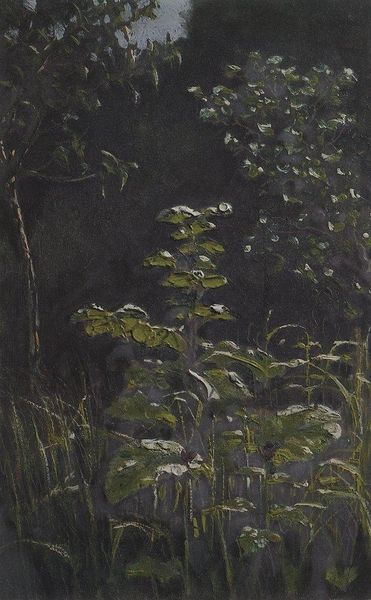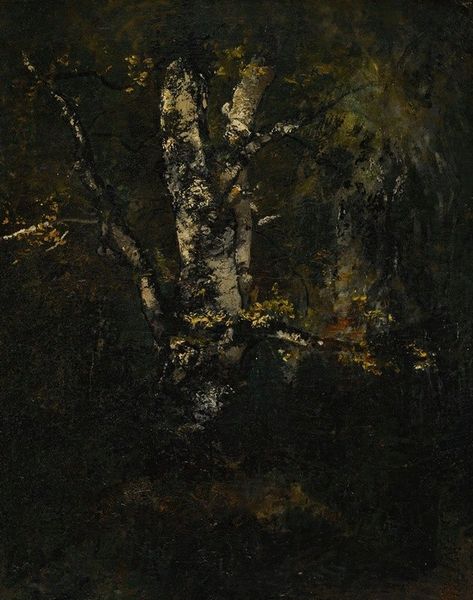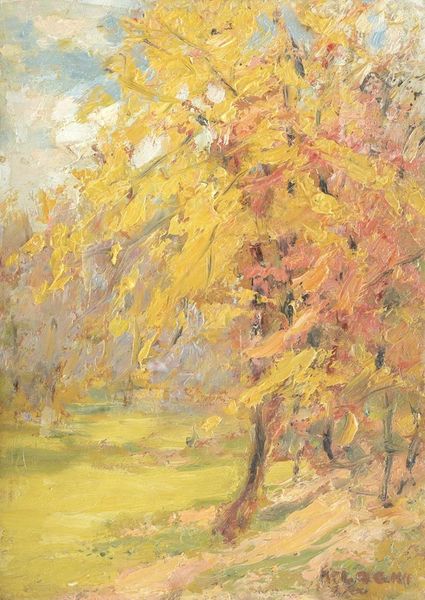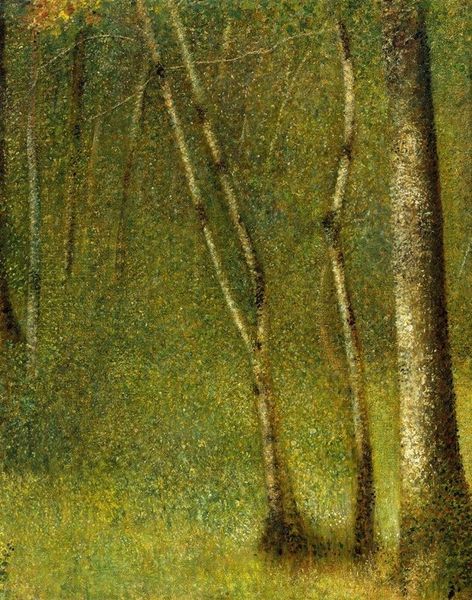
painting, plein-air, oil-paint
#
impressionist
#
painting
#
impressionism
#
plein-air
#
oil-paint
#
landscape
#
flower
#
impressionist landscape
#
oil painting
Dimensions: 24 x 32.5 cm
Copyright: Public domain
Curator: This is Vincent van Gogh's "Blossoming Acacia Branches," painted in 1890. The painting currently resides here at the Nationalmuseum in Stockholm. Editor: My first impression is…energy. There's this frenetic, almost agitated, application of paint. The yellow just pops. Curator: Indeed. Consider Van Gogh's placement of this work in his larger oeuvre, especially its creation in the asylum at Saint-Remy. We see him grappling with his mental state through the motif of nature. What is nature’s place in the public perception of mental illness at that time? How does it inform our perspective now? Editor: I’m drawn to the impasto, the sheer physicality of the paint. You can practically feel the artist’s hand, the deliberate strokes. It screams material process. These were not simply "happy trees;" these branches demanded labor. What sort of pigments were available to Van Gogh, and who produced those resources? How does that inform the way that he painted and the public viewed the works at the time? Curator: That focus on the material does invite questions around the production. Van Gogh’s style became so intrinsically connected to marketing the idea of the struggling artist; how complicit are we in continuing that narrative by centering solely on the materials? What other interpretations have become secondary? Editor: But the materiality is the narrative! The density creates that swirling sense of movement, that vibrant energy. It speaks volumes about Van Gogh’s inner world, perhaps more authentically than any biographical account. Was the labor in making paint appreciated? Who got credit for that making? We cannot discuss van Gogh separate from his support system or from his materials. Curator: It's an intriguing counterpoint. Examining this work allows us to challenge these conventional understandings. Instead of limiting it to an expression of the artist’s tormented mind, as art institutions have largely reinforced, we can acknowledge these additional factors and explore its place in social history. Editor: Exactly. It reminds us that art isn't created in a vacuum, that everything stems from something. By emphasizing those overlooked processes, we come to understand and appreciate art and, especially Van Gogh, so much better. Curator: Ultimately, "Blossoming Acacia Branches" prompts us to reconsider the ways we engage with art history, by confronting biases, as well as looking past marketing. Editor: Absolutely. And by extension, how labor, resources, and accessible information converge into how we perceive these works in the modern era.
Comments
No comments
Be the first to comment and join the conversation on the ultimate creative platform.
